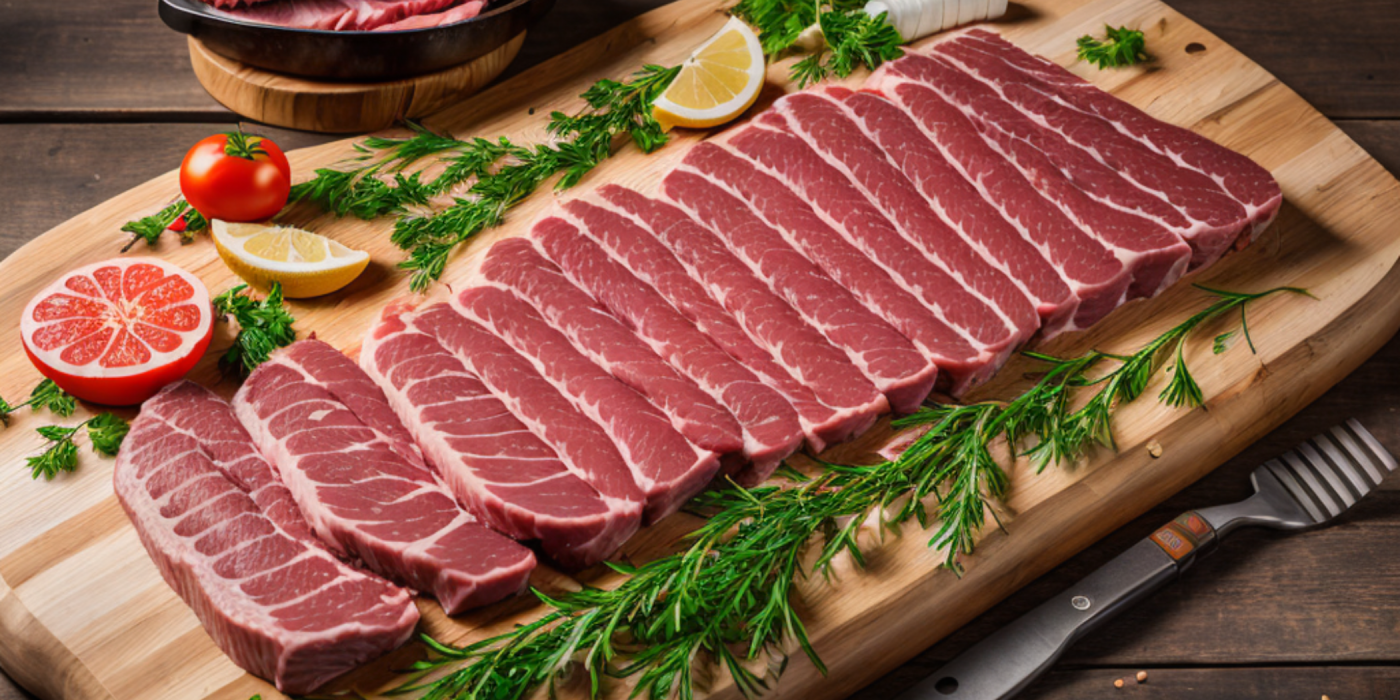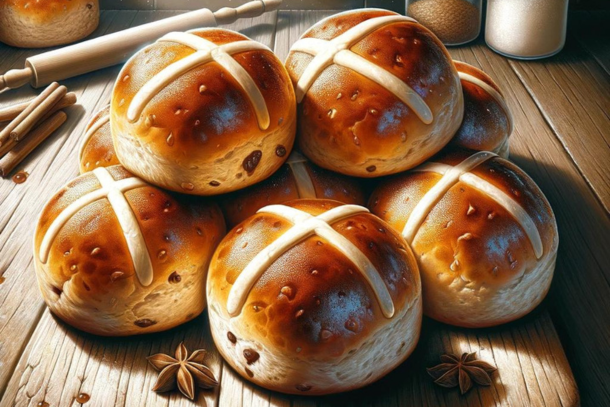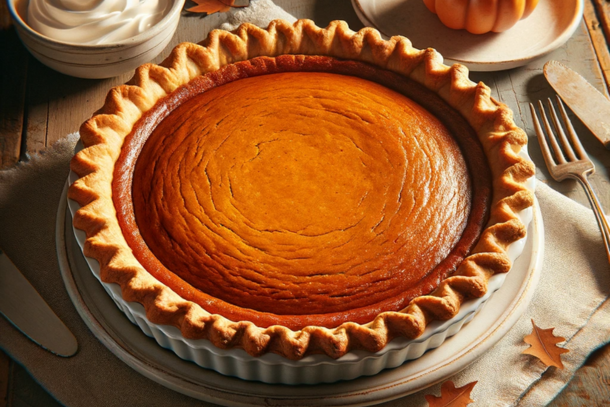The Paleo Diet: Unraveling the Nutritional Wisdom of Our Ancestors

The Paleo diet, also known as the Stone Age or Caveman diet, is often hailed as a return to our dietary roots. It's a way of eating that attempts to mimic the diet of our hunter-gatherer ancestors, focusing on the consumption of whole, unprocessed foods.
Defining the Paleo Diet
The Paleo diet, grounded in the idea that our bodies are best adapted to the foods our ancestors consumed, includes foods that could be hunted or gathered. This includes meats, fish, fruits, vegetables, nuts, and seeds. Foods that emerged with the advent of farming, such as dairy products, grains, and processed foods, are generally excluded.
Origins of the Paleo Diet
The Paleo diet traces its roots back to the 1970s when gastroenterologist Walter Voegtlin first suggested the benefits of such a diet in his book "The Stone Age Diet." However, it wasn't until the early 2000s, when Loren Cordain published "The Paleo Diet", that the concept began to gain mainstream popularity. Cordain's research posited that by returning to the eating habits of our Paleolithic ancestors, we could improve our health and reduce the risk of chronic diseases.
The Modern Relevance of the Paleo Diet
In today's fast-paced world, where convenience foods are the norm, the Paleo diet serves as a reminder of the importance of whole, unprocessed foods. It offers a counter-argument to modern diets laden with sugars, unhealthy fats, and artificial ingredients. The Paleo diet has been associated with numerous health benefits, from weight loss to improved gut health. It emphasises the importance of food quality, advocating for grass-fed meats and organic produce where possible. Despite being centuries old, its principles are more relevant than ever, given the rise of lifestyle diseases associated with poor diet and overconsumption of processed foods.
Understanding the Paleo Diet
Foods Included in the Paleo Diet
The Paleo diet, often described as a 'caveman' diet, encourages the consumption of unprocessed, natural foods that our Paleolithic ancestors would have had access to. It mainly focuses on fresh fruits, vegetables, lean meats, fish, nuts, and seeds.
Unprocessed, Natural Foods
An array of vibrant fruits and vegetables form the cornerstone of the Paleo diet. Berries, apples, bananas, leafy greens, peppers, and root vegetables like sweet potatoes are all on the menu. Further, nuts and seeds, such as almonds, walnuts, flaxseeds and pumpkin seeds, provide an excellent source of healthy fats and protein.
Quality Sources for Meat and Fish
When it comes to proteins, quality is as important as quantity. The Paleo diet emphasises on grass-fed meats, free-range poultry, and wild-caught fish. This not only aligns with the diet's naturalistic approach, but these sources tend to be richer in certain nutrients compared to their conventionally raised counterparts.
Foods to Avoid in the Paleo Diet
Not all foods fit into the Paleo template. Some common foods and food groups need to be sidestepped.
Grains, Dairy, and Processed Foods
Grains, including wheat, rice, and oats, are generally excluded from the Paleo diet due to their high carbohydrate content and potential for gut irritation. Similarly, dairy is often omitted due to common intolerances and the fact it was not consumed in the Paleolithic era. Most importantly, processed foods, packed with preservatives, artificial ingredients and sugars, are a clear 'no' on the Paleo list.
The Principle of the Paleo Diet
The "Eat Like a Hunter-Gatherer" Concept
The fundamental idea of the Paleo diet is to "eat like a hunter-gatherer". This means adopting a diet that is close to nature, full of nutrient-dense whole foods, and free of the processed foods that permeate our modern diet. This ancestral approach to eating aims to support optimal health by reducing processed food consumption and promoting a balanced, natural diet.
Health Benefits of the Paleo Diet
There are numerous health benefits associated with adopting the Paleo diet. From facilitating natural weight loss to promoting gut health, preventing lifestyle diseases and boosting energy levels, this ancient dietary pattern can significantly impact your overall wellbeing.
Weight Loss
The Paleo diet plays a pivotal role in natural weight loss. By emphasising whole, unprocessed foods and limiting the intake of high-carbohydrate processed foods, this diet inherently reduces calorie intake while maintaining satiety.
Role of the Paleo Diet in natural weight loss
The Paleo diet encourages the consumption of high-protein and high-fibre foods, which help in maintaining a feeling of fullness, thereby curbing overeating and snacking.
Evidence from scientific studies supporting weight loss
Several studies corroborate the weight loss potential of the Paleo diet. For example, a research published in the European Journal of Clinical Nutrition found that a Paleolithic diet resulted in greater weight loss compared to traditional heart-healthy dietary recommendations.
Improved Gut Health
Explanation on how the Paleo diet promotes gut health
By eliminating processed foods and prioritising fresh fruits, vegetables, and lean meats, the Paleo diet encourages a healthy gut microbiome, thus potentially reducing inflammation and promoting optimal digestion.
Prevention of Lifestyle Diseases
How the Paleo diet can help in preventing diabetes, heart disease, etc.
The Paleo diet's focus on lean proteins, fruits, vegetables, and healthy fats can help maintain balanced blood sugar levels, promote heart health, and potentially stave off lifestyle diseases such as diabetes and heart disease.
Increased Energy Levels
How consuming natural, unprocessed foods can boost energy levels
When your diet is rich in whole, natural foods, as in the Paleo diet, you're likely to experience a significant boost in your energy levels. This is because these foods provide steady energy rather than the quick, sugar-induced highs followed by crashes that processed foods often cause.
Debunking Common Myths and Misconceptions About the Paleo Diet
Misconception: The Paleo Diet is Overly Restrictive and Difficult to Follow
One commonly held belief is that the Paleo diet is overly restrictive, limiting the foods one can enjoy. Some view it as a burdensome task rather than a sustainable way of eating. This, however, couldn't be further from the truth. Yes, the diet does advocate for the avoidance of processed foods, grains, and dairy — ingredients that are prevalent in our modern diets. But on the flip side, it encourages a diverse range of nutrient-rich foods like lean meats, fish, fruits, vegetables, nuts, and seeds. With a bit of creativity in the kitchen, you can whip up delicious and varied meals that adhere to Paleo principles. Furthermore, various resources and Paleo-friendly recipes available online make it even easier to adopt and stick to this way of eating.
Myth: The Paleo Diet Leads to Nutritional Deficiencies
Another unfounded myth about the Paleo diet is that it can lead to nutritional deficiencies, particularly in calcium and carbohydrates. Yet, this isn't the case. Paleo encourages the consumption of a wide variety of vegetables and certain root vegetables, which can provide ample carbohydrates. Additionally, while dairy products are typically excluded, you can obtain calcium from other Paleo-approved sources, such as leafy green vegetables, nuts, and fish like sardines and salmon.
Modern Lifestyle and the Paleo Diet
Lastly, the idea that the Paleo diet doesn't fit into our modern lifestyle is a misconception. The reality is that the Paleo diet's emphasis on whole, unprocessed foods aligns well with the growing awareness and push towards healthier eating habits. More and more people are seeking out natural, unprocessed foods to combat lifestyle diseases, making the Paleo diet more relevant than ever in our fast-paced, convenience food-laden society.
Practical Tips and Advice for Starting a Paleo Diet
Transitioning to a new diet can be challenging, especially when it involves significant changes to your regular eating habits. However, the Paleo diet can be made more manageable by following some simple guidelines and helpful tips.
How to Smoothly Transition to a Paleo Diet
It's crucial to start slow and make changes gradually. Begin by eliminating processed foods and increasing your intake of fresh fruits, vegetables, lean meats and healthy fats. It's not necessary to go 'all in' from day one, but progressively work your way to a fully Paleo lifestyle.
Examples of Easy and Delicious Paleo Recipes
The beauty of the Paleo diet lies in its simplicity and versatility. One could start with a basic grilled chicken salad with a variety of fresh vegetables and a homemade olive oil dressing. For a hearty breakfast, a plate of scrambled eggs with avocados and a side of fresh fruit would fit the bill. These are simple, tasty, and completely in line with the Paleo philosophy.
Managing Social Events and Dining Out
Social gatherings and eating out needn't be a stumbling block. Research restaurants beforehand for their Paleo-friendly options, or you could opt for dishes like grilled meats and fish, salads or steamed vegetables. At social events, focus on whole food options and avoid processed nibbles.
Overcoming Common Challenges
Common challenges when starting a Paleo diet include craving for sugar and dealing with occasional hunger due to reduced carbohydrate intake. Combat this by having Paleo-friendly snacks like nuts and fruits at hand and ensuring you're eating sufficient protein to keep you satiated.
Remember, persistence is key. Small slip-ups may happen, but that's not a reason to give up. Keep at it, and over time, you'll find the Paleo lifestyle becoming second nature.
Case Studies and Success Stories
Delving into real-life examples often provides the most compelling evidence. Here, we present a couple of case studies that depict how the Paleo diet has revolutionised people's lives.
John's Transformation: From Flab to Fab
John, a 35-year-old software engineer from Manchester, was tipping the scales at 120kg. He was grappling with obesity and diabetes. The lack of physical activity and a penchant for processed food were the main culprits.
The Turning Point
John discovered the Paleo diet while browsing online. Intrigued, he decided to give it a whirl. He began substituting processed food with fruits, vegetables, lean meats, and nuts, all staples of the Paleo diet.
The Outcome
Within six months, John lost a whopping 30kg and was able to manage his diabetes without medication. He attributes his dramatic transformation to the Paleo diet and regular exercise. "I've never felt better," he says, exuding newfound confidence.
Sarah's Journey: Conquering Chronic Fatigue
Sarah, a busy 40-year-old lawyer from London, was plagued by chronic fatigue syndrome, a condition that left her constantly drained. Despite her attempts to rectify the situation through conventional treatments, she found no relief.
A New Hope
A friend recommended the Paleo diet. Sarah began to incorporate more whole foods into her diet, eliminating processed items, grains, and dairy.
The Result
The change was nothing short of miraculous. Sarah reports not only a significant reduction in fatigue but an overall enhancement of well-being. "Switching to the Paleo diet was one of the best decisions I've made," she asserts.
These are just a couple of stories that showcase the remarkable impact of the Paleo diet on health and lifestyle. Thousands of people across the globe, including right here in the UK, have experienced similar benefits.
Wrapping Up: Rediscovering the Paleolithic Dietary Wisdom
A Brief Recap of the Paleo Diet Journey
As we navigate through our modern lives, sometimes, it's worth looking back to draw wisdom from our ancestors - especially when it comes to our dietary choices. The Paleo diet, rooted in the eating habits of our hunter-gatherer forebears, focuses on consuming unprocessed, whole foods - the staples of our ancestors' diet. From lean meats and fish to colourful vegetables to seeds and nuts, it emphasises the importance of natural and wholesome nourishment. The benefits are manifold, including potential weight loss, improved gut health, and the prevention of various lifestyle diseases.
Why Not Give the Paleo Diet a Go?
If you're seeking a dietary change that embraces natural food sources, or if you're merely curious to try a holistic approach to your eating habits, why not give the Paleo diet a go? You might be surprised at how your body responds positively to this switch. Remember, it's not about restriction; it's about learning to choose food that fuels and nourishes you. And what could be more gratifying than that?
Share Your Paleo Experiences
Have you embarked on a Paleo diet journey already? If so, we would absolutely love to hear from you. Your stories, experiences, or even queries could provide invaluable insights to others who might be considering this dietary path. Don't be shy - whether you have a delightful Paleo recipe to share or a question about sourcing Paleo-friendly ingredients, your input can add tremendous value to our growing community.
So, what are you waiting for? Dive into the world of Paleo and share your story with us - together, we can foster healthier lifestyles, one meal at a time.
I do hope you have enjoyed this article and hope that you will subscribe to my newsletter so you can get the latest information about all things naturally relaxing.
Stay in touch, join the Naturally Relaxing Newsletter
Newsletter Signup
Post Your Comments
or post as a guest
Be the first to comment.
Latest articles in Food

Hot Cross Buns This Easter: A Timeless Tradition of Baking and Sharing

Chocolate Krispie Cakes for Easter: A Simple, Festive Treat for All

2023 Christmas Culinary Delights: Recipes for the Ultimate Festive Feast

Embrace Autumn with the Best Pumpkin Spice Recipes in the UK

Turning Pumpkin Carvings into Pumpkin Pie: A British Culinary Tradition






